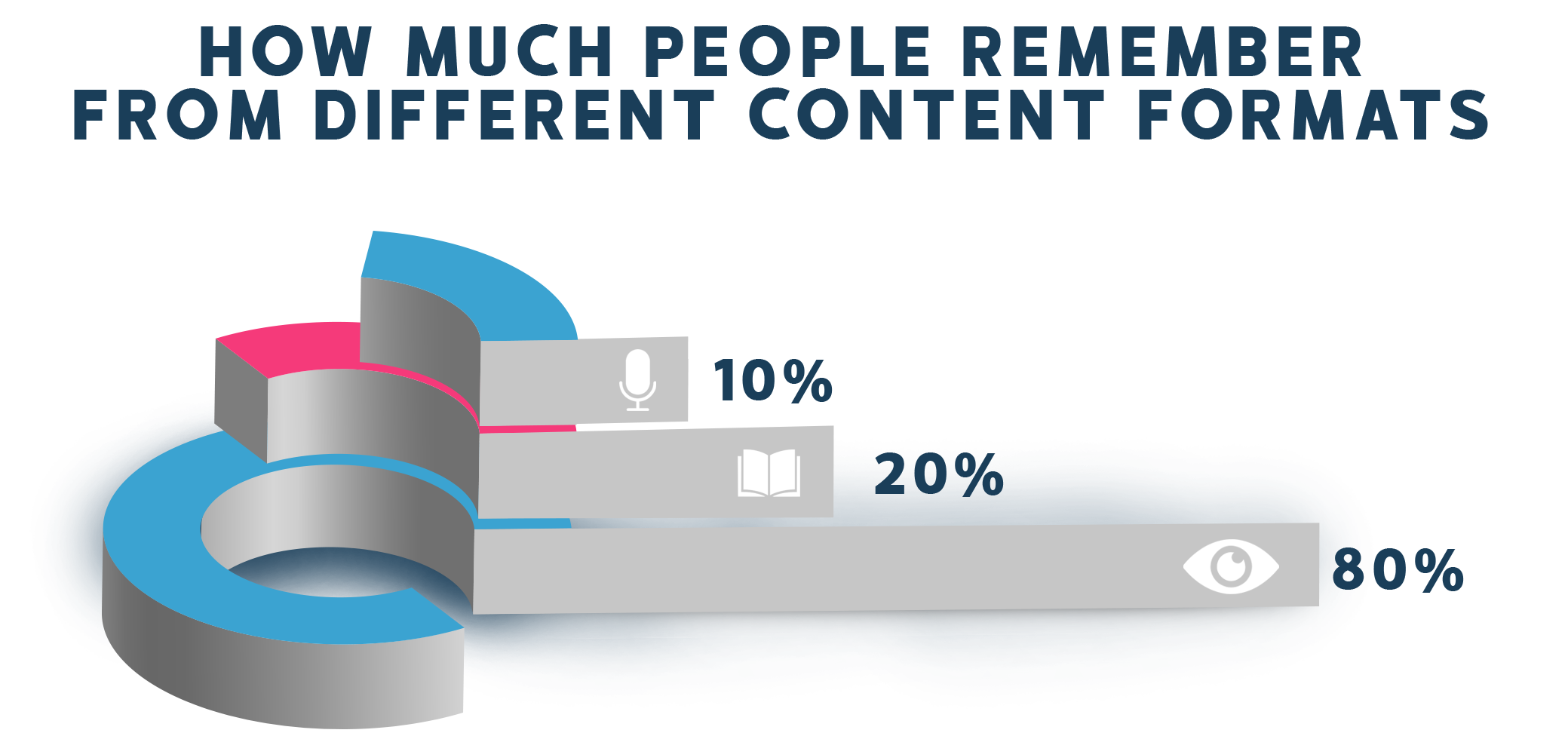Your marketing message, which is the core of any marketing campaign that you do, can come in many forms. It can be either text, images, audio, or videos (and soon the Metaverse 😉)
But, did you know that your audience only remembers 20% of what they read on your platform? Can you imagine how this number will change if you turn the same info from text to visual? It jumps to 80%! This is just an average number considering an average design.
Our team of graphic designers doesn’t even get satisfied with this 80%. Our mission is to enable you to convey your business messages to your audience in the most efficient and memorable ways.

Why Fly Pie?
One way Fly Pie does graphic design better is by not only giving you good looking designs to help you with your short-term goals but helping you keep your identity intact throughout your campaigns.
We were able to construct the ideal process to make your designs appear more authentic to your brand and in the most efficient way, here’s how we do it..
Our Process
- Instead of starting right away with the design, we take a moment to analyze your business brand thoroughly with Fly Pie’s analysts team
- We send you sketches of the initial design to avoid wasting time for edits when the paint has dried.
- After that, you can discuss and edit the design if you, but not with a normal graphic designer, but with one who really knows the spirit of your business.
- Audience testing of effect.
How to Choose Your Graphic Designer?
There are some things to put into consideration before you hire a graphic designer, first and foremost is their priorities. For some designers, the priority is simply to give you what you imagine, no matter its effect on the audience or the quality compared to standards. Others care the most about designing a good looking design, even if sometimes it distorts the marketing message you need to send to your audience.
In Fly Pie’s graphic design team, our #1 priority is the message. For that reason, we keep testing every design we do on some audience and make sure that they get the message we want to send from this design.
With that in mind, none of our designs is, in anyways, away from what our client requires. Neither do we focus on the message while disregarding the overall good looks of the design. All these priorities are crucial to be there in any designer, but it’s much better to have someone who has them in the correct order.
H1: Our process in making creative designs follow 5 steps
Step 1: Meet with the client and analyze the brief
We meet our clients via email, phone or even a video call to propose a design project. If you are a new client, we may anticipate a face-to-face encounter before moving on to the quote step. We bring portfolio items that are related to your goal in mind or through making a discussion to really understand the need. This allows you to determine whether style and approach are appropriate.
Then, we give you a design brief form to fill out, which includes sections on the project’s information, the deadline, and your own thoughts for the design’s style or direction (if you have any). It is also very beneficial if you can supply information on your company’s brand ethos and competitors in the industry, and access to brand standards, if accessible, is crucial for brand-centric initiatives. Even simple brand aspects, such as a color palette or fonts, can be a great place to start when developing our ideas.
Step 2: Conduct Market Research
Market investigation, We aren’t tempted to go right into design once we have a clear brief in place. But market research is a frequently overlooked part of the process.
Conduct some online research on your industry and competition.
The market research will also provide us with useful context for the designs, we can begin to consider how your design will remain relevant to the sector while occupying a distinct niche in the market. We may also avoid any embarrassing duplicate logo instances.
Step3: Mood Boarding
Designers each have their own favored methods for gathering and compiling ideas. So we provide the best mood board that is preferred to each designer. Some designers prefer to make a real board out of clippings, printouts, sketches, and color samples. Alternatively, making a simple grid-based board in Photoshop or InDesign is a quick method to incorporate photos received from the internet.
Step 4: Making a primary design
Putting down a primary sketch on the computer is the fourth step. Then we show these designs to our team to have their opinions and ideas. Our designers make secondary edits and we send you a sample to know your opinion and if you need any edits.
Step 5: Refinement of the Concept
We, the company’s designers, are refining the done designs.
While our designers are taking a breather after completing all the necessary processes, they work on their designs one more time till reach the perfection.
Contact Us Now
Leave your details and we will contact you with more info.



